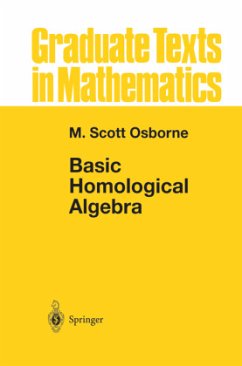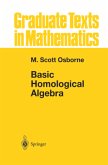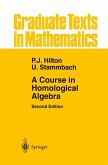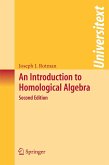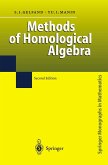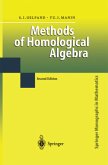Five years ago, I taught a one-quarter course in homological algebra. I discovered that there was no book which was really suitable as a text for such a short course, so I decided to write one. The point was to cover both Ext and Tor early, and still have enough material for a larger course (one semester or two quarters) going off in any of several possible directions. This book is 'also intended to be readable enough for independent study. The core of the subject is covered in Chapters 1 through 3 and the first two sections ofChapter 4. At that point there are several options. Chapters 4 and 5 cover the more traditional aspects of dimension and ring changes. Chapters 6 and 7 cover derived functors in general. Chapter 8 focuses on a special property of Tor. These three groupings are independent, as are various sections from Chapter 9, which is intended as a source of special topics. (The prerequisites for each section of Chapter 9 are stated at the beginning.) Some things have been included simply because they are hard to find else where, and they naturally fit into the discussion. Lazard's theorem (Section 8.4)-is an example; Sections4,5, and 7ofChapter 9 containother examples, as do the appendices at the end.
"The book is well written. We find here many examples. Each chapter is followed by exercises, and at the end of the book there are outline solutions to some of them. ... I especially appreciated the lively style of the book; compared with some other books on homological algebra, one has here the good feeling that one understands why a notion is defined in this way,that one can easily remember at least the structure of the theory, and that one is quickly able to find necessary details. The prerequisite for this book is a graduate course on algebra, but one get quite far with a modest knowledge of algebra. The book can be strongly recommended as a textbook for a course on homological algebra." EMS Newsletter, June 2001
"Each chapter contains a reasonable selection of exercises. ... its intended audience is second or third year graduate students in algebra, algebraic topology, or other fields that use homological algebra. ... the author's style is both readable and entertaining ... . All in all, this book is a very welcome addition to the literature." (T.W.Hungerford, zbMATH 0948.18001, 2022)
"The book is well written. We find here many examples. Each chapter is followed by exercises, and at the end of the book there are outline solutions to some of them. ... I especially appreciated the lively style of the book; compared with some other books on homological algebra, one has here the good feeling that one understands why a notion is defined in this way,that one can easily remember at least the structure of the theory, and that one is quickly able to find necessary details. The prerequisite for this book is a graduate course on algebra, but one get quite far with a modest knowledge of algebra. The book can be strongly recommended as a textbook for a course on homological algebra."
EMS Newsletter, June 2001
"The book is well written. We find here many examples. Each chapter is followed by exercises, and at the end of the book there are outline solutions to some of them. ... I especially appreciated the lively style of the book; compared with some other books on homological algebra, one has here the good feeling that one understands why a notion is defined in this way,that one can easily remember at least the structure of the theory, and that one is quickly able to find necessary details. The prerequisite for this book is a graduate course on algebra, but one get quite far with a modest knowledge of algebra. The book can be strongly recommended as a textbook for a course on homological algebra."
EMS Newsletter, June 2001
The book is well written. We find here many examples. Each chapter is followed by exercises, and at the end of the book there are outline solutions to some of them. ... I especially appreciated the lively style of the book; compared with some other books on homological algebra, one has here the good feeling that one understands why a notion is defined in this way,that one can easily remember at least the structure of the theory, and that one is quickly able to find necessary details. The prerequisite for this book is a graduate course on algebra, but one get quite far with a modest knowledge of algebra. The book can be strongly recommended as a textbook for a course on homological algebra. EMS Newsletter, June.

